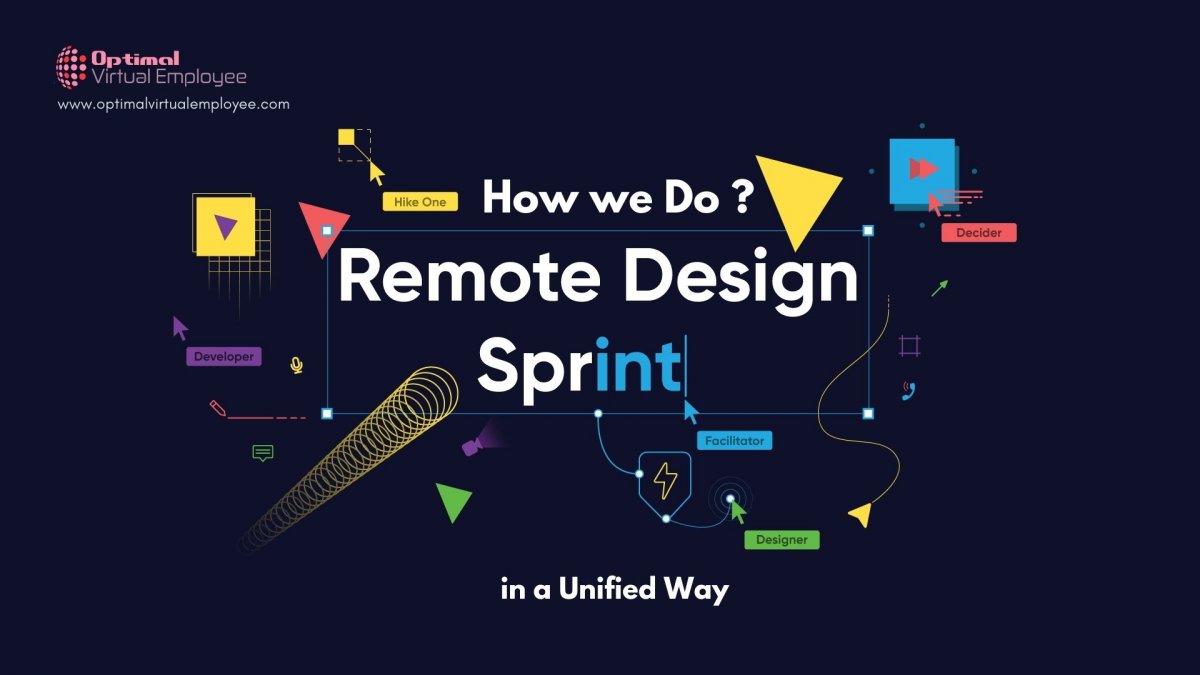As an offshore service provider, we face several challenges including geological time zones, unavailability of teams, miscommunications, and others during our processes. However, over time we have surpassed all these hurdles and made our deliverables aligned with the client’s brief by running remote design sprints. We ensure that our clients save money, the time to market is short and the product matches their vision in the best possible way.
Our remote design sprints are a typical five-day process. We analyze the needs of our clients, plan the sketches, make important decisions about the ideas, and then design a prototype for our clients. Our last step involves testing the prototypes before we hand over the control to our clients completely. Remote design sprints are the preliminary steps that help in synchronizing the entire process, starting with planning to prototype building, testing, and the final deployment.
Our Remote design sprint Team
In our team, we have:
The supervisor/manager whose job is to call all the shots regarding the design sprint process.
- A facilitator who maintains coordination between all the team members and our overseas clients.
- Our marketing expert is in charge of pitching our ideas and explaining the prototypes to our clients.
- Our designer team is concerned with planning the design sprints and coming up with different sketches till they match our clients’ needs.
We also have technical experts who convert the sketches into a live prototype and then perform various testing to ensure the functionalities are matching with our clients’ requirements list.
Step 1: Preparing for the Remote Design Sprint
Before we start remote design sprints, a lot of preparatory work needs to be done. Be it in choosing the sprint team or selecting the software tools for proceeding with the work, we include everything in the setup. Prior preparations help us avoid conflicts between team members and delays in work. The key events during our preparatory steps are:
- Deciding whether we need to integrate new tools for the design sprint or the existing tools will be enough for a particular client.
- In case we decide to use different tools, we choose the appropriate software platforms for virtual video conferencing, team discussions, and a virtual whiteboard.
- Scheduling the design sprints based on time zones since we need to establish proper communication between the clients and our team.
- Planning which work needs to be done on what day and also assigning the works to each team is done during the preparatory part.
- Facilitating the plans and work schedules amongst each team member so that we can get everyone on board.
Step 2: Mapping the Design Sprint
In this stage, we begin by explaining the entire sprint to our team members as a warm-up activity. We do this to ensure that no point is missed out. After this, we set up the long-term goals that the final prototype will serve. We focus on both the immediate and long-term requirements of our clients.
After this, we allow our team members to write their own ideas, self-evaluate them as per the goals, and then vote for the plans. The ideas getting the maximum votes are finalized. We also make sure to keep our customers’ point of view in mind so that the final prototype can serve its purpose without fail.
Step 3: Sketching the Design Sprints
Sketching involves transforming those ideas into 2D designs, where every part of the Design Print is explained properly. Every designer takes reference from the long-term goals we have set so that their sketches can match our clients’ requirements. Our facilitator makes sure that every designer is on the same page and is working harmoniously.
In addition, during the sketching, we use different tools and software platforms to come up with the perfect sketches for the prototype. We choose only those sketch designs which closely resemble what our client has envisioned.
Step 4: Making decisions Regarding Design Sprints
By the time our design team is done with sketching, we have a minimum of three or more sketches, each describing the brief in different ways. In this stage, we point out the flaws and virtues of the sketches and compare them so that the most appropriate sketch is selected.
If none of the sketches are up to the mark, we take help from brainstorming and discuss the problems that our design team has faced. This helps us to avoid major pitfalls while developing the final prototype for our clients. No decision is finalized unless all the team members are on the same page.
Step 5: Developing and Testing the Prototype
Our last steps involve developing and testing the prototype resembling the final selected sketch. Once our tech team completes building the prototype, unit testing or trial run is done to ensure that all the parts are functioning properly in coordination with others.
Next, we place the prototype for testing. Starting from manual testing to performance testing and automation testing, a series of examinations are done to ensure that the prototype is working perfectly under varied coordinates of conditions given by the users. Dummy data is used during the tests which are collected and then sent to the clients for their better understanding.
Final words
Over the years, we have mastered the task of remote design sprints so that we can meet the requirements of all our foreign clients despite the challenges like differences in time zones, lack of communication, and others. Our teams work closely with each other following an agile way of working to ensure that the end-product is developed successfully without any error. If you have any query you can connect with us at enquiry@optimalvirtualemployee.com.
Read More:









